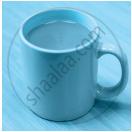Advertisements
Advertisements
प्रश्न
A retailer buys an article at a discount of 20% on the listed price from a wholesaler. The shopkeeper marks up the price by 10% on the listed price. A buyer pays Rs 231 to get it after paying a sales tax at the rate of 5% on the price asked for. Find the profit percentage.
उत्तर
Let listed price be x. Rebate on listed price = 20 % of listed price
Rebated price = x - 20 % of x
= `x - (20 x)/100`
= `(80 x)/100` ............(i)
Effective marked price = listed price + 10 % of listed price
= `x + 10/100 xx x`
= `(110 x)/100`
Sales tax = 5 % of the effective marked price
= `5/100 xx "Rs" (110 x)/100`
= Rs `(55 x)/1000`
Total cost =
= Rs `(110 x)/100 + "Rs" (5 x)/1000`
= `(1105 x)/1000`
But total cost = Rs 231
⇒ `(1105 x)/1000` = Rs 231
⇒ 1105 x = Rs231000
⇒ x = Rs 209. 04
Listed price = Rs 209
Cost price for shopkeeper = `(80 x)/100` .................(from (i))
= Rs `80/100 xx 209`
= Rs 167.20
Effective marked price = `(110 x)/100` ...................(from (ii))
= Rs `110/100 xx 209`
= Rs 229.90
His profit = (effective marked price - rebated cost price)
=Rs (229.90-167.20) =Rs 62.70
His profit percentage = `62.70/167.20 xx 100 = 37.5 %`
Hence, his profit percentage = 37.5 %
APPEARS IN
संबंधित प्रश्न
A dealer buys a wristwatch for Rs 225 and spends Rs 15 on its repairs. If he sells the same for Rs 300, find his profit percent.
Abraham bought goods worth Rs 50000 and spent Rs 7000 on transport and octroi. If he sold the goods for Rs 65000, did he make a profit or a loss? How much?
Using the figures given below, frame problems based on profit percent or loss percent.
Cost price ₹ 2000, selling price ₹ 1900
Find the unknowns x, y and z.
| Name of the item | Marked Price | Selling Price | Discount |
| Digital clock | ₹ 750 | ₹ 615 | z |
Muthu has a car worth ₹ 8,50,000 and he wants to sell it at a profit of ₹ 25,000. What should be the selling price of the car?
The marked price of an article when it is sold for Rs 880 after a discount of 12% is ______.
On selling a chair for Rs 736, a shopkeeper suffers a loss of 8%. At what price should he sell it so as to gain 8%?
Achal bought a second-hand car for Rs 2,25,000 and spend Rs 25,000 for repairing. If he sold it for Rs 3,25,000, what is his profit per cent?
With the decrease in prices of tea by 15% Tonu, the chaiwallah, was able to buy 2 kg more of tea with the same Rs 45 that he spent each month on buying tea leaves for his chai shop. What was the reduced price of tea? What was the original price of tea?

Match the entries in Column I with the appropriate entries in Column II:
| Column I | Column II |
| (i) 3:5 | (A) ₹ 54 |
| (ii) 2.5 | (B) ₹ 47 |
| (iii) 100% | (C) ₹ 53 |
| (iv) `2/3` | (D) ₹ 160 |
| (v) `6 1/4%` | (E) 60% |
| (vi) 12.5% | (F) 25% |
| (vii) SP when CP = ₹ 50 and loss = 6 % | (G) `1/16` |
| (viii) SP when CP = ₹ 50 and profit = ₹ 4 | (H) 250% |
| (ix) Profit% when CP = ₹ 40 and SP = ₹ 50 | (I) ₹ 159 |
| (x) Profit% when CP = ₹ 50 and SP = ₹ 60 | (J) `66 2/3%` |
| (xi) Interest when principal = ₹ 800, Rate of interest = 10% per annum nd period = 2 years |
(K) 20% |
| (xii) Amount when principal = ₹ 150, Rate of interest = 6% per annum and period = 1 year |
(L) 0.125 |
| (M) 3:2 | |
| (N) ₹ 164 | |
| (O) 3:3 |
